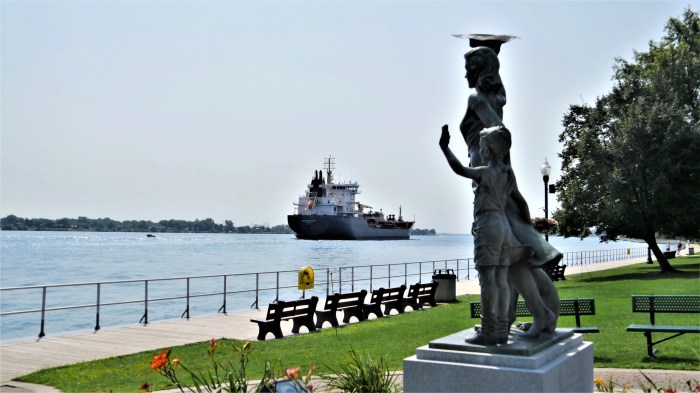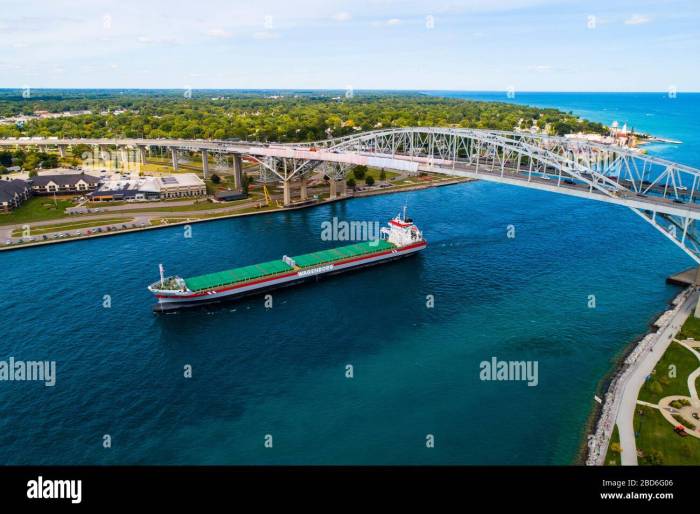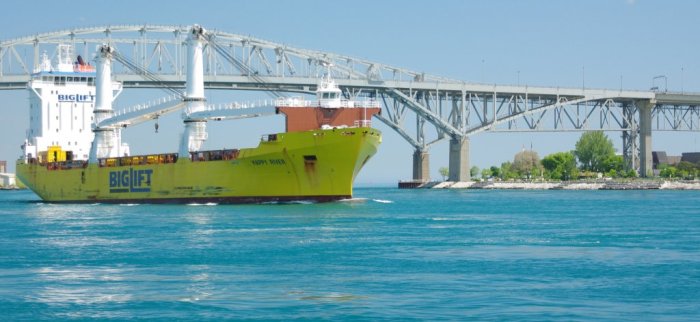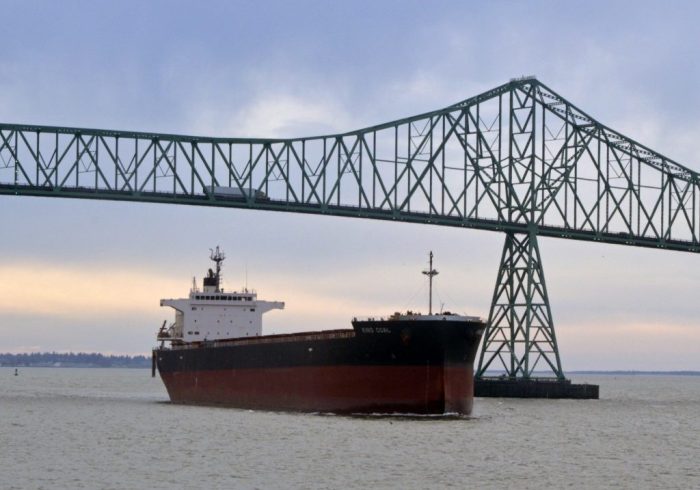St clair river ship traffic – St. Clair River ship traffic plays a pivotal role in the economic and environmental landscape of the region. From its historical significance to its current bustling activity, this river serves as a crucial artery for trade, transportation, and industry, shaping the past, present, and future of the area.
The river’s strategic location and deep waters have made it a natural hub for shipping, with a diverse fleet of vessels navigating its channels. The economic impact of this maritime activity is substantial, supporting local businesses and contributing to the overall prosperity of the region.
Historical Significance of St. Clair River Ship Traffic

The St. Clair River has played a vital role in the economic and industrial development of the Great Lakes region for centuries. Native American tribes used the river as a transportation route, and European explorers and traders followed suit in the 17th and 18th centuries.
In the 19th century, the St. Clair River became a major shipping channel for agricultural products, lumber, and iron ore. The opening of the Soo Locks in 1855 further increased ship traffic on the river, making it a vital link between the Great Lakes and the Atlantic Ocean.
Shipbuilding and Industry
The growth of ship traffic on the St. Clair River led to the establishment of several shipyards and other industries along its shores. Port Huron, Michigan, became a major shipbuilding center, and the city’s shipyards produced some of the largest and most powerful ships on the Great Lakes.
Other industries that developed along the St. Clair River included lumber mills, grain elevators, and iron foundries. These industries relied on the river for transportation of raw materials and finished products.
Current Volume and Composition of Ship Traffic

The St. Clair River serves as a bustling waterway for commercial shipping, connecting the Great Lakes and the Atlantic Ocean. The river experiences a significant volume of vessel traffic, with a diverse range of vessels navigating its waters.
According to statistics, approximately 50,000 vessels traverse the St. Clair River annually. These vessels include:
- Bulk carriers: Transporting commodities such as iron ore, coal, and grain
- Tankers: Carrying liquids like crude oil and refined petroleum products
- Container ships: Hauling cargo in standardized containers
- General cargo vessels: Carrying a wide variety of goods
- Tugs and barges: Assisting larger vessels and transporting bulk materials
The shipping industry on the St. Clair River is of paramount economic importance. It supports numerous jobs and contributes significantly to the region’s economy. The river serves as a vital transportation route for raw materials, finished goods, and energy products, facilitating trade and commerce both domestically and internationally.
The major commodities transported on the St. Clair River include:
- Iron ore: Essential for steel production
- Coal: Used for power generation
- Grain: Transported to feed mills and exported globally
- Petroleum products: Including gasoline, diesel, and heating oil
- Chemicals: Used in various industries, such as manufacturing and agriculture
Environmental Impact of Ship Traffic

The bustling ship traffic on the St. Clair River carries both benefits and potential risks to the river’s ecosystem. While shipping supports economic activities and transportation, it can also lead to various environmental impacts.
Water Pollution
- Ships can discharge wastewater, bilge water, and other pollutants into the river, potentially contaminating the water and harming aquatic life.
- Oil spills and leaks from ships pose significant threats to the river’s ecosystem, affecting water quality and harming wildlife.
Air Pollution
- Ship engines emit air pollutants such as nitrogen oxides, sulfur oxides, and particulate matter, contributing to air quality degradation in the region.
- The transportation of goods by ships can increase overall carbon emissions, contributing to climate change.
Noise Pollution
- The constant movement of ships generates noise pollution, which can disturb wildlife and affect the quality of life for nearby communities.
- Propeller cavitation, a phenomenon caused by ship propellers, can create loud and disruptive underwater noise.
Mitigation Measures
To mitigate these environmental impacts, various measures have been implemented:
- Regulations and standards have been established to limit pollution discharges from ships.
- Ballast water treatment systems are used to prevent the introduction of invasive species into the river.
- Noise-reducing technologies, such as low-noise propellers, are being explored and implemented.
Role of Regulations
Government regulations play a crucial role in protecting the St. Clair River’s environment. They establish standards for water and air quality, limit pollution discharges, and enforce compliance.
By implementing these regulations, authorities aim to minimize the environmental impacts of ship traffic while ensuring the continued economic benefits of the waterway.
Challenges and Opportunities for Ship Traffic: St Clair River Ship Traffic

The St. Clair River is a bustling waterway that presents both challenges and opportunities for ship traffic. While it is a vital transportation route for goods and people, the river also faces issues such as congestion, environmental concerns, and the need for innovation.
The bustling St Clair River ship traffic, a testament to the region’s industrial might, flows like a relentless current. Amidst the cacophony of engines, one can’t help but recall the timeless words of “A Jury of Her Peers,” where a group of women, isolated and misunderstood, grapple with the complexities of their own judgment.
Like the river’s relentless flow, the echoes of their voices continue to resonate, reminding us of the hidden struggles and triumphs that shape our communities.
Despite these challenges, there are also opportunities for growth and improvement. Initiatives aimed at enhancing efficiency and safety are being implemented, and the potential for further innovation exists. This section will explore the challenges and opportunities facing ship traffic on the St.
Clair River.
Challenges, St clair river ship traffic
The St. Clair River faces several challenges that impact ship traffic. One major issue is congestion, particularly during peak shipping seasons. The narrow and winding nature of the river, combined with the high volume of traffic, can lead to delays and safety concerns.
Another challenge is the environmental impact of ship traffic. The river is home to a diverse ecosystem, and the passage of large vessels can disrupt habitats, pollute the water, and contribute to noise pollution.
Opportunities
Despite the challenges, there are also opportunities for growth and innovation in ship traffic on the St. Clair River. One potential opportunity is the development of new technologies to improve efficiency and safety. For example, the use of automated navigation systems and data-sharing platforms could help reduce congestion and improve communication between vessels.
Another opportunity lies in the promotion of sustainable practices. By adopting environmentally friendly technologies and reducing emissions, ship traffic can minimize its impact on the river’s ecosystem.
Initiatives
Several initiatives are underway to address the challenges and capitalize on the opportunities for ship traffic on the St. Clair River. One such initiative is the St. Clair River Corridor Study, which aims to improve navigation safety and efficiency through infrastructure upgrades and operational improvements.
Additionally, the Great Lakes-St. Lawrence Seaway System is investing in new technology to enhance communication and situational awareness for vessels.
International Cooperation on Ship Traffic

International cooperation is crucial for effectively managing ship traffic on the St. Clair River. The river forms a boundary between the United States and Canada, requiring collaboration between the two countries to ensure safe and efficient navigation.Various agreements and organizations facilitate international cooperation on the St.
Clair River. The Great Lakes-St. Lawrence Seaway System Agreement, signed in 1972, establishes a framework for joint management of the waterway. The International Joint Commission (IJC), established under the Boundary Waters Treaty of 1909, plays a key role in resolving transboundary issues related to the river, including ship traffic management.Challenges
in international collaboration include differing regulations and enforcement practices between the two countries. However, successful cooperation has been achieved through regular consultations, joint planning, and coordinated enforcement efforts.
Question & Answer Hub
What are the major commodities transported on the St. Clair River?
Bulk commodities such as iron ore, coal, and grain are the primary cargoes transported on the river.
What measures are taken to mitigate the environmental impacts of ship traffic?
Regulations, spill response plans, and technological advancements in ship design and operation aim to minimize the environmental footprint of shipping activities.
How does international cooperation contribute to the management of St. Clair River ship traffic?
Agreements between the United States and Canada, as well as organizations like the International Joint Commission, facilitate coordination and ensure the safe and efficient flow of vessels.